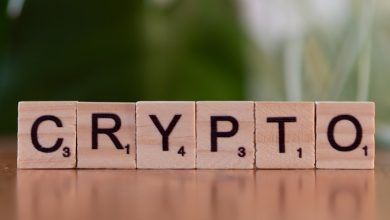How to Verify the Legitimacy of a Crypto Project

- How to Research the Team Behind the Project
- Analyzing the Whitepaper and Roadmap
- Checking for Partnerships and Collaborations
- Reviewing the Tokenomics and Distribution
- Examining the Technology and Codebase
- Consulting Community Forums and Social Media Channels
How to Research the Team Behind the Project
Researching the team behind a crypto project is crucial in determining its legitimacy. By understanding who is involved in the project, investors can gain insight into the team’s experience, credibility, and track record. Here are some steps to help you verify the team behind a crypto project:
1. **Check the Team’s Website**: Start by visiting the project’s official website to find information about the team members. Look for details such as their names, photos, biographies, and LinkedIn profiles.
2. **Review LinkedIn Profiles**: Verify the team members’ backgrounds and experiences on LinkedIn. Look for any relevant industry experience, previous projects they have worked on, and endorsements from others in the field.
3. **Search for Online Presence**: Look for the team members’ presence on social media platforms, forums, and other online communities. This can help you gauge their reputation and engagement within the crypto community.
4. **Check for Red Flags**: Be wary of teams that have anonymous or fake profiles, lack relevant experience, or have a history of involvement in fraudulent activities. Look for any inconsistencies in the information provided by the team.
5. **Seek Third-Party Validation**: Look for any endorsements or mentions of the team members in reputable publications, industry events, or conferences. This can help validate their expertise and credibility in the crypto space.
By conducting thorough research on the team behind a crypto project, you can make more informed investment decisions and reduce the risk of falling victim to scams or fraudulent schemes. Remember to always trust but verify before committing your hard-earned money to any crypto project.
Analyzing the Whitepaper and Roadmap
When verifying the legitimacy of a crypto project, it is crucial to thoroughly analyze the whitepaper and roadmap provided by the team. These documents serve as a blueprint for the project’s goals, technology, and timeline. By carefully reviewing the whitepaper, investors can gain insight into the project’s vision, tokenomics, and use cases. The whitepaper should contain detailed information about the problem the project aims to solve, the solution proposed, and the team behind it. Look for technical details, partnerships, and a clear roadmap for development and milestones.
Similarly, the roadmap outlines the project’s timeline and key milestones. It shows the progress the team has made so far and what they plan to achieve in the future. A well-thought-out roadmap should have realistic goals and a clear timeline for each stage of development. Make sure to cross-reference the milestones with the actual progress of the project to verify its credibility. Look for transparency and consistency in the updates provided by the team to ensure they are on track to deliver on their promises.
Checking for Partnerships and Collaborations
One way to verify the legitimacy of a crypto project is by checking for partnerships and collaborations. This can give you insight into the credibility of the project and whether or not it has the support of other reputable organizations in the industry.
Look for any announcements or press releases about partnerships with well-known companies in the crypto space. Additionally, see if the project has collaborations with established blockchain platforms or industry influencers.
By conducting thorough research on the partnerships and collaborations of a crypto project, you can better assess its legitimacy and potential for success in the long run. Remember to verify the information from multiple sources to ensure its accuracy.
Reviewing the Tokenomics and Distribution
When verifying the legitimacy of a crypto project, it is crucial to review the tokenomics and distribution to ensure transparency and fairness. Tokenomics refers to the design and structure of a project’s token, including its supply, distribution, and utility. By analyzing the tokenomics, investors can gain insight into how the project plans to generate value and sustain growth over time.
One key aspect to consider is the token distribution. This involves examining how tokens are allocated among team members, investors, advisors, and the community. A fair distribution is essential to prevent centralization of control and ensure that all stakeholders have a stake in the project’s success. Additionally, it is important to review the lock-up periods and vesting schedules for tokens to prevent early dumping and price manipulation.
Another important factor to consider is the token utility. Tokens should have a clear purpose within the ecosystem, whether it be for governance, staking, or utility within decentralized applications. Projects with a strong use case for their tokens are more likely to succeed in the long run. Investors should also look for projects with a transparent and sustainable tokenomics model that aligns incentives for all parties involved.
Overall, reviewing the tokenomics and distribution of a crypto project is essential for verifying its legitimacy and potential for long-term success. By conducting due diligence in this area, investors can make more informed decisions and avoid falling victim to scams or fraudulent projects.
Examining the Technology and Codebase
Another crucial aspect in verifying the legitimacy of a crypto project is examining the technology and codebase. This involves assessing the technical aspects of the project to ensure that it is built on a solid foundation and is capable of delivering on its promises.
One way to do this is by reviewing the project’s whitepaper, which should outline the technology and codebase in detail. Look for information on the underlying blockchain technology, consensus mechanism, and smart contract functionality. This will give you insight into the technical capabilities of the project and help you determine whether it is feasible and sustainable.
In addition to the whitepaper, you can also review the project’s GitHub repository to examine the actual codebase. Look for active development, a clear roadmap, and regular updates to the code. This will indicate that the project is being actively maintained and improved over time.
Furthermore, you can also consider conducting a code audit or hiring a third-party firm to review the project’s code for any vulnerabilities or weaknesses. This will help you assess the security of the project and ensure that it is not susceptible to hacking or other malicious activities.
Consulting Community Forums and Social Media Channels
Another effective way to verify the legitimacy of a crypto project is by consulting community forums and social media channels. These platforms provide valuable insights and feedback from other investors and experts in the cryptocurrency space. By participating in discussions and reading reviews, you can get a better understanding of the project’s reputation and potential risks.
On community forums like Bitcointalk and Reddit, you can find threads dedicated to specific crypto projects where users share their experiences and opinions. Pay attention to any red flags or negative feedback that could indicate potential scams or fraudulent activities. It’s also important to look for positive reviews and endorsements from reputable members of the community.
Social media channels such as Twitter, Telegram, and Discord are also great sources of information about crypto projects. Follow official accounts and join relevant groups to stay updated on the latest news and announcements. Engage with other members to ask questions and gather more insights about the project’s team, technology, and roadmap.
Keep in mind that while community forums and social media channels can be helpful in verifying the legitimacy of a crypto project, it’s important to exercise caution and do your own research. Don’t rely solely on the opinions of others, and always verify information from multiple sources before making any investment decisions.



